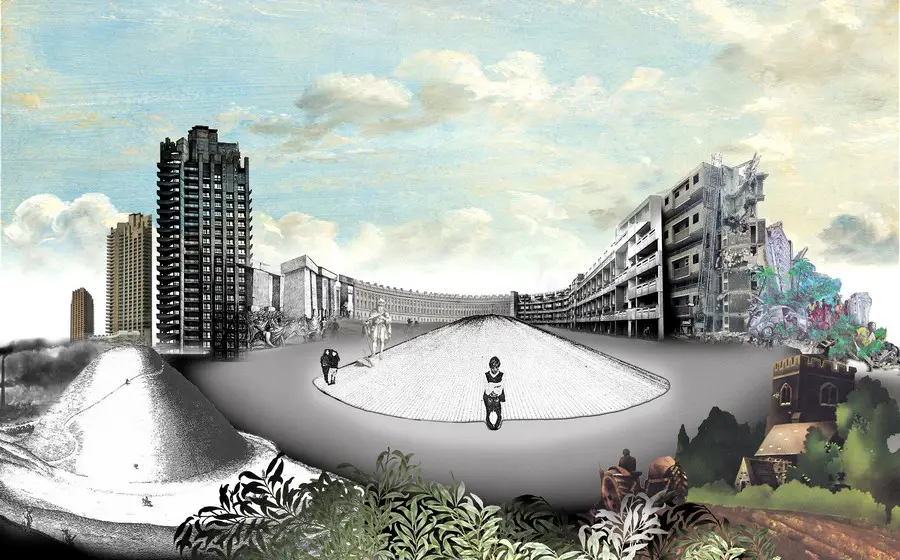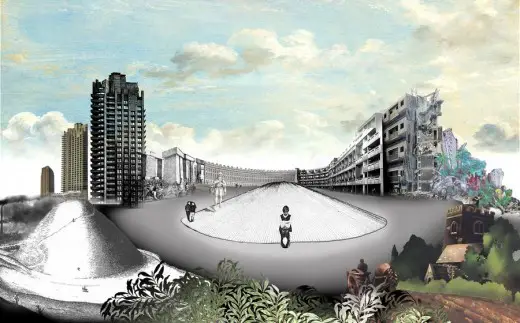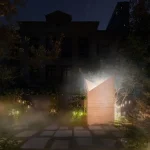Venice Architecture Biennale British Pavilion 2014, Exhibition, Design
Venice Biennale 2014 British Pavilion
Great Britain Architecture Exhibition, Italy – curated by FAT Architecture + Crimson Architectural Historians
8 + 5 Jun 2014
Pavilion of Great Britain Opens
A Clockwork Jerusalem
Curators: FAT Architecture and Crimson Architectural Historians
14TH INTERNATIONAL ARCHITECTURE EXHIBITION
LA BIENNALE DI VENEZIA 7 JUNE –23 NOVEMBER 2014
The British Pavilion was officially opened at the Biennale Architettura 2014, with a ribbon cutting ceremony at 4.00pm (CET) today, Thursday 5th June.
Presented by the British Council and curated by FAT Architecture and Crimson Architectural Historians, the British Pavilion’s A Clockwork Jerusalem exhibition responds to the theme of ‘Absorbing Modernity: 1914 – 2014’, as set for the national pavilions by Rem Koolhaas, Curator of the Biennale Architettura 2014.
The exhibition explores the origins, projects and experience of British modernity; the culture that postwar architecture and planning emerged from, and the worlds that it created.
Upon the opening of the British Pavilion, Vicky Richardson, Commissioner of the British Pavilion and Director of Architecture, Design, Fashion at the British Council, said:
‘A Clockwork Jerusalem is a witty and insightful exhibition that we hope will provoke debate about British architecture. We’re delighted to be working with FAT Architecture and Crimson Architectural Historians, both practices that have broken new ground and made an important contribution to the international discussion about Modernism and the wider cultural context of architecture. The exhibition uses images and language brilliantly to link a series of complex issues that we hope will lead to a new debate about the UK’s plans for housing and New Towns.’
A Clockwork Jerusalem explores how a specifically British form of Modernism emerged in the aftermath of the Industrial Revolution. This combined traditions of the Romantic, sublime and pastoral with a fascination and fear of the industry, technology and science fiction to create new visions of society that became the basis for post-war architecture and planning.
The exhibition tells the story of the visions – both real and imaginary – that arose during Britain’s struggle to come to terms with modernity, and explores how they continue to inform the nation’s physical and imaginative landscapes.
Suggesting trajectories to address the new forms of crisis in a now globalised modernity, A Clockwork Jerusalem argues for today’s challenges in architecture and planning to be faced with the same imagination and ambition that has long characterised Britain’s attempts to build its New Jerusalems.
Curator Sam Jacob of FAT Architecture said:
‘A Clockwork Jerusalem describes a world where ruins become utopias, where archaeology and futurism merge, the Picturesque is reimagined as concrete geometry, and where pop culture, history and social ambition are fused into new national futures. It argues for a rebooting of the British tradition of visionary planning that created places as diverse as Cumbernauld and Milton Keynes, proposing that these visions – Ebenezer Howard’s Garden City equation; the anarcho-liberal ‘experiment in freedom’ of Non-Plan; and the sustainability represented by Clifford Harper’s Radical Technology – are not only history but suggestions of possible 21st Century New Jerusalems.
‘As one of FAT Architecture’s final projects, curating this exhibition at the Biennale Architettura 2014 for the British Council brings the opportunity to suggest how the history and culture of British architecture might give new direction to the future, and is a fitting conclusion to the FAT project.’
Curator Wouter Vanstiphout of Crimson Architectural Historians said:
‘Britain sometimes seems to forget its own long history and tradition as a country of town planners – from the New Towns Act (1946) through to the pop-radicalism of Archigram and Cedric Price – and the entrepreneurs, strange cultish groups and activist communities that have also hugely contributed to the national debate about shaping the environment.’
‘The attitudes and imagination that characterise the architecture and planning described by A Clockwork Jerusalem can act as the starting point for new visions of Britain and other nations. As population density, urban sprawl and city skylines are increasing across the world, we find ourselves asking Ebenezer Howard’s central question once again: “The People: Where Will They Go?”‘
‘A Clockwork Jerusalem is part of Crimson’s ongoing engagement with 20th Century modernist town planning, both as planner/consultants and as curators and researchers. The Biennale Architettura 2014 is also a great platform to present the long standing collaboration between Crimson and FAT to a large international audience.’
Taking the large-scale projects of the 50s, 60s and 70s as a point of departure, A Clockwork Jerusalem explores the mature flowering of British Modernism – the moment it was at its most socially, politically and architecturally ambitious but also the moment that witnessed its collapse. The exhibition chronicles the origins and myths of British Modernism, the products and the cultures it created.
Outside the pavilion, visitors are greeted by a pair of Concrete Cows on loan from Milton Keynes – the last of the post-war British New Towns. Originally produced by artist Liz Leyh in 1978, shortly after Milton Keynes was established, the cows have become unofficial mascots of the town. Shipped to Venice for the Biennale, the Concrete Cows assume a formal position on either side of the entrance to the British Pavilion in the manner of Venetian lions.
The portico of the British Pavilion has been transformed into an ‘Electric Picturesque’ landscape. Tree trunks installed from floor to ceiling interrupt the symmetry of the Neoclassical pavilion. Seen through the forest is an animated white LED galloping horse, representing a high-tech reworking of the Neolithic white horses carved into British hillsides.
The main room of the pavilion features a 1.5 metre high, 7 metre diameter earth mound and a 360º panoramic image. The mound references thousands of years of British architecture, from ancient burial mounds to the rubble of demolished slums, sculpted into mounds as the central landscape feature of idealistic projects in places such as Arnold Circus and Robin Hood Gardens. The mound symbolises both the beginning and the end: destruction and construction.
Surrounding the mound is a panoramic narrative image that tells the story of British Modernism, referencing British visual and architectural culture: William Morris, Stanley Kubrick, David Hockey, Archigram and more. The eye of William Blake, author of the words to the famous poem Jerusalem, sits at the centre of the panorama, made up with a cog like a Droog from Stanley Kubrick’s famous A Clockwork Orange.
In the rooms around the central installation, images, objects and artefacts tell the story of British Modernism from Stonehenge to council estates, from Ebenezer Howard to Cliff Richard, from ruins and destruction to rural fantasies. Large scale models show three of the exhibition’s significant housing projects: Hulme, Thamesmead and Cumbernauld.
A Clockwork Jerusalem will be open to the public throughout the duration of the Biennale Architettura 2014, from 7th June to 23rd November 2014, with a press preview from 5th to 6th June.
Images: FAT Architecture
Venice Biennale British Pavilion information / images from the British Council
Location: Venice Biennale, Italy
Venice Architecture
Venice Architecture Designs – chronological list
Venice Architecture Walking Tours
Venice Biennale – Exhibitions, Designs, Images
Venice Biennale Croatia Pavilion
Venice Biennale Danish Pavilion
Venice Biennale British Pavilion
Venice Biennale British Pavilion 2013
Venice Biennale British Pavilion 2012
Venice Biennale British Pavilion 2010
Comments / photos for the Venice Biennale 2014 British Pavilion page welcome
Venice Biennale British Pavilion
2014Website: Visit Venice



